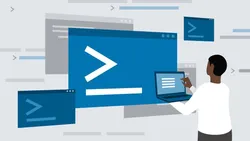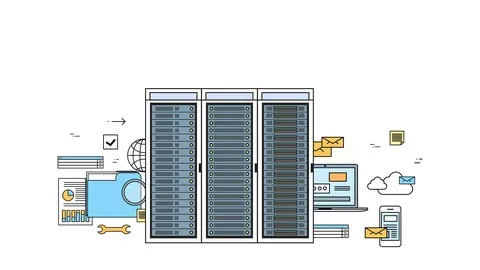
Querying with Transact-SQL 
Gain an introduction to Querying with Transact-SQL ▼
ADVERTISEMENT
Course Feature
![]() Cost:
Cost:
Free Trial
![]() Provider:
Provider:
QuickStart
![]() Certificate:
Certificate:
No Information
![]() Language:
Language:
English
![]() Start Date:
Start Date:
Self Paced
Course Overview
❗The content presented here is sourced directly from QuickStart platform. For comprehensive course details, including enrollment information, simply click on the 'Go to class' link on our website.
Updated in [May 19th, 2023]
This course provides an overview of the Transact-SQL language, with a focus on querying and modifying data in Microsoft SQL Server or Azure SQL Database. Participants will learn how to write SELECT statements to query data from a single table or multiple tables, and how to use built-in functions to manipulate data. They will also learn how to use Transact-SQL to insert, update, and delete data, and how to use subqueries and joins to combine data from multiple tables. Finally, participants will learn how to use Transact-SQL to create and manage database objects such as tables, views, and stored procedures. By the end of the course, participants will have a solid understanding of the Transact-SQL language and be able to use it to query and modify data in Microsoft SQL Server or Azure SQL Database.
[Applications]
After completing this course, students should be able to apply their knowledge of Transact-SQL to query and modify data in Microsoft SQL Server or Azure SQL Database. They should be able to create and modify tables, views, and stored procedures, as well as use Transact-SQL to query and manipulate data. Additionally, they should be able to use Transact-SQL to create and manage database objects, such as tables, views, and stored procedures. Finally, they should be able to use Transact-SQL to create and manage database security.
[Career Paths]
1. Database Administrator: Database Administrators are responsible for the installation, configuration, and maintenance of databases. They are also responsible for ensuring the security and performance of the database. With the knowledge gained from this course, Database Administrators can use Transact-SQL to query and modify data in Microsoft SQL Server or Azure SQL Database. As the demand for data-driven solutions continues to grow, the need for Database Administrators with Transact-SQL skills will also increase.
2. Data Analyst: Data Analysts use data to identify trends and patterns, and to make predictions and recommendations. With the knowledge gained from this course, Data Analysts can use Transact-SQL to query and analyze data in Microsoft SQL Server or Azure SQL Database. As the demand for data-driven solutions continues to grow, the need for Data Analysts with Transact-SQL skills will also increase.
3. Business Intelligence Developer: Business Intelligence Developers use data to create reports and dashboards that help organizations make better decisions. With the knowledge gained from this course, Business Intelligence Developers can use Transact-SQL to query and analyze data in Microsoft SQL Server or Azure SQL Database. As the demand for data-driven solutions continues to grow, the need for Business Intelligence Developers with Transact-SQL skills will also increase.
4. Database Developer: Database Developers are responsible for designing, developing, and maintaining databases. With the knowledge gained from this course, Database Developers can use Transact-SQL to query and modify data in Microsoft SQL Server or Azure SQL Database. As the demand for data-driven solutions continues to grow, the need for Database Developers with Transact-SQL skills will also increase.
[Education Paths]
1. Bachelor of Science in Computer Science: This degree path provides a comprehensive overview of computer science, including topics such as programming, software engineering, database management, and web development. It also covers the fundamentals of Transact-SQL, allowing students to gain a deeper understanding of the language and its applications. As technology continues to evolve, this degree path will become increasingly important for those looking to stay ahead of the curve.
2. Master of Science in Database Administration: This degree path focuses on the management and maintenance of databases, including those powered by Transact-SQL. Students will learn how to design, implement, and maintain databases, as well as how to optimize their performance. With the increasing demand for data-driven solutions, this degree path is becoming increasingly important for those looking to stay ahead of the competition.
3. Master of Science in Business Intelligence: This degree path focuses on the analysis and interpretation of data, including data stored in databases powered by Transact-SQL. Students will learn how to use data to make informed decisions and develop strategies for businesses. As businesses become increasingly reliant on data-driven solutions, this degree path is becoming increasingly important for those looking to stay ahead of the competition.
4. Doctor of Philosophy in Computer Science: This degree path provides an in-depth exploration of computer science, including topics such as programming, software engineering, database management, and web development. It also covers the fundamentals of Transact-SQL, allowing students to gain a deeper understanding of the language and its applications. As technology continues to evolve, this degree path will become increasingly important for those looking to stay ahead of the curve.
Course Provider

Provider QuickStart's Stats at AZClass
Discussion and Reviews
0.0 (Based on 0 reviews)
Explore Similar Online Courses

Algorithms Part II

The Ultimate Guide to Stencil for Merch By Amazon KDP & POD

RDBMS PostgreSQL

Intro To PostgreSQL Databases With PgAdmin For Beginners

PostgreSQL: Client Applications

Mastering SQL using Postgresql

Database Design and Basic SQL in PostgreSQL

PostgreSQL: Advanced Queries

Spatial SQL with Postgres : A language for geographers

Learn SQL Using PostgreSQL: From Zero to Hero

PostgreSQL Essential Training


Start your review of Querying with Transact-SQL